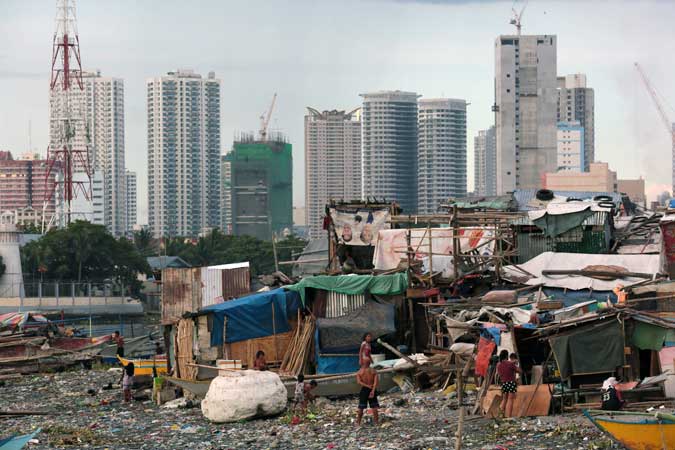The government set a 6-7% growth target for this year. — PHILIPPINE STAR/ MICHAEL VARCAS
THE Philippine economy will likely grow slower than initially expected this year, barely hitting the low end of the government’s target amid the prolonged coronavirus pandemic, First Metro Investment Corp. (FMIC) said.
FMIC lowered its Philippine gross domestic product (GDP) growth projection to 5-6% for this year, slower than the 5.5-6.5% forecast given in January.
The forecast was lowered after GDP shrank by 4.2% in the first quarter and due to the resurgence in coronavirus disease 2019 (COVID-19) cases that prompted renewed lockdown restrictions, Victor A. Abola, an economist at University of Asia and the Pacific (UA&P) said at a briefing on Wednesday.
“But this half percent (cut) is fairly minor. It’s more aligned with the government’s projection,” he said. “I think there is a cause to be more optimistic. We can see things looking up and the economy is bouncing back.”
The government has set a 6-7% GDP growth target for this year.
Despite the outlook downgrade, FMIC President Jose Patricio A. Dumlao said the Philippine economy is expected to switch “from resilience to growth” this year.
Mr. Abola said the recovery prospects are looking brighter as domestic demand, a major driver of growth, is catching up, while household spending and investments are also improving.
The rebound in international trade, with both exports and imports surging by double digits in May, also pointed to an improving economic landscape.
“Growth forecast will be led by the industry sector, particularly in construction. Public construction has been accelerating and shows the determination of the government to make it a booster for the economy,” Mr. Abola said.
State spending on infrastructure doubled to P78.9 billion in May from P38.9 billion a year ago, bringing the five-month total to P332.2 billion.
Faster public spending is expected to provide a much needed boost to the economy in the coming months, especially as the national elections near.
“However, the service sector will continue to lag because the ability of restaurants, hotels, transportation, air and even land transportations is still limited,” Mr. Abola added.
FMIC projected the country’s outstanding debt to rise to 62% of GDP by yearend and further rise to 66% of GDP in 2022, which Mr. Abola said is still manageable since these are lower than its peers.
As of March, the government’s debt stock stood at P10.774 trillion, equivalent to 60.4% of economic output.
Economic growth could further slow if COVID-19 cases continue to rise, the vaccination rollout is derailed and supply chain disruptions persist.
The weakening of the peso against the greenback, and bureaucratic red tape are also risks to growth.
The Bangko Sentral ng Pilipinas is also expected to keep an accommodative stance to help the economy rebound faster. — Beatrice M. Laforga

